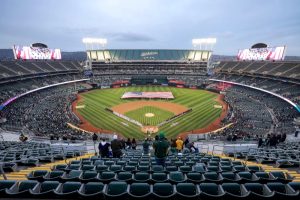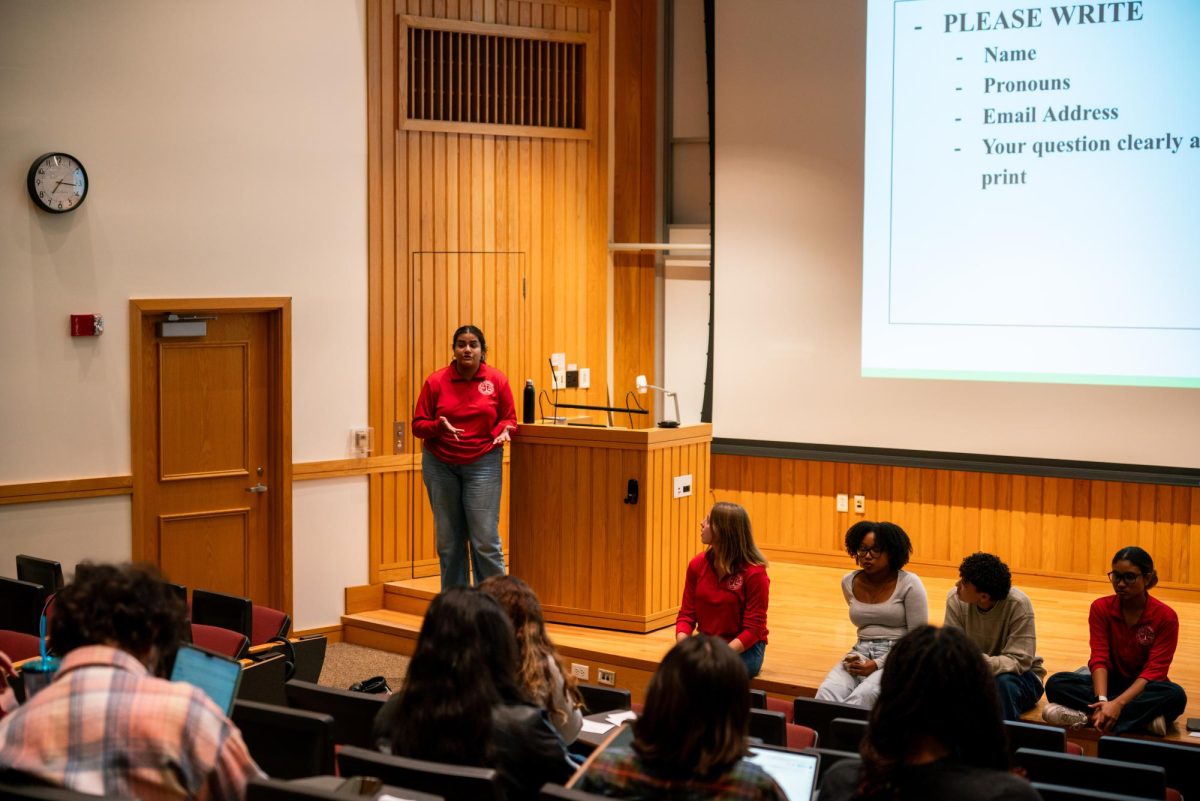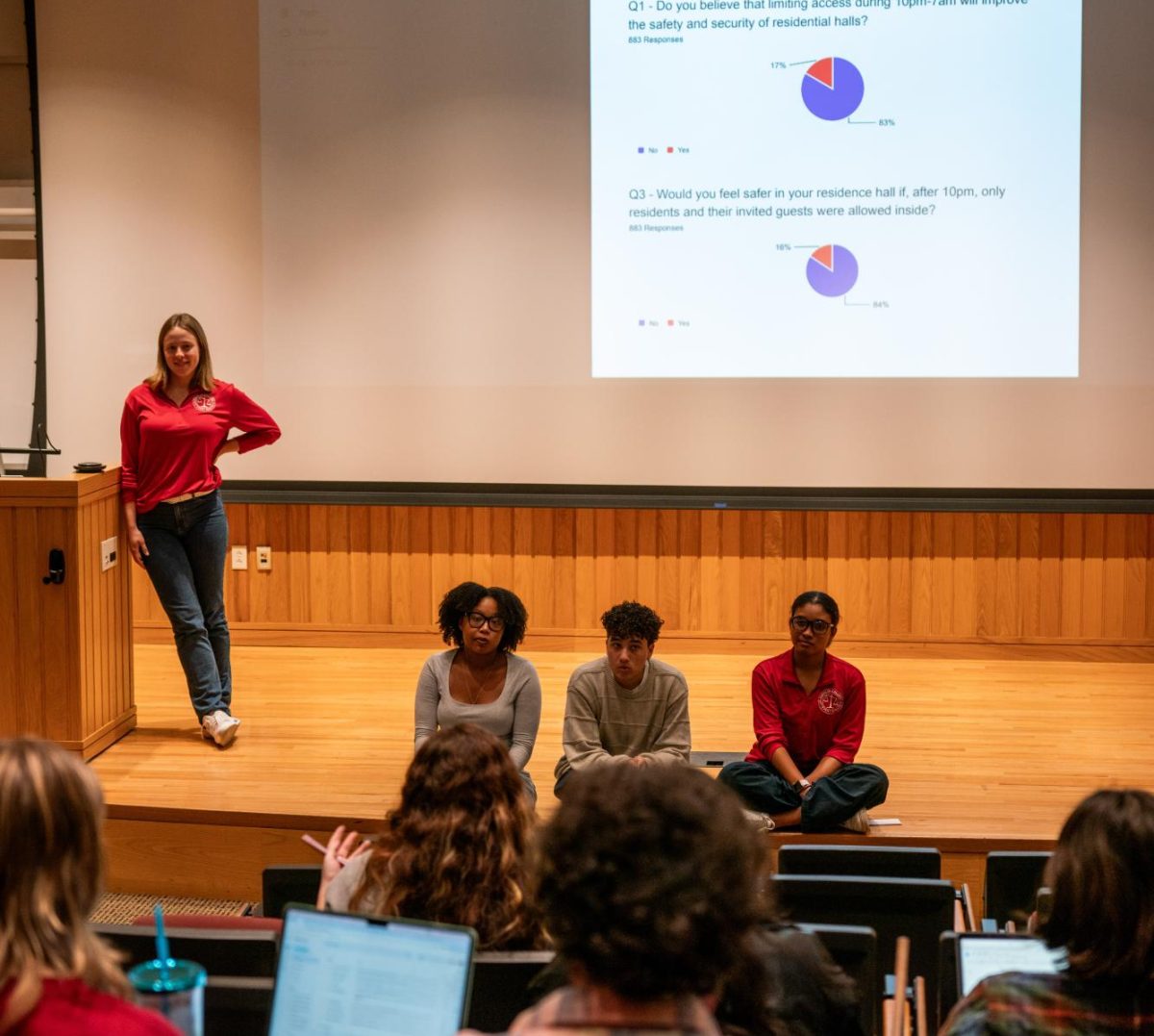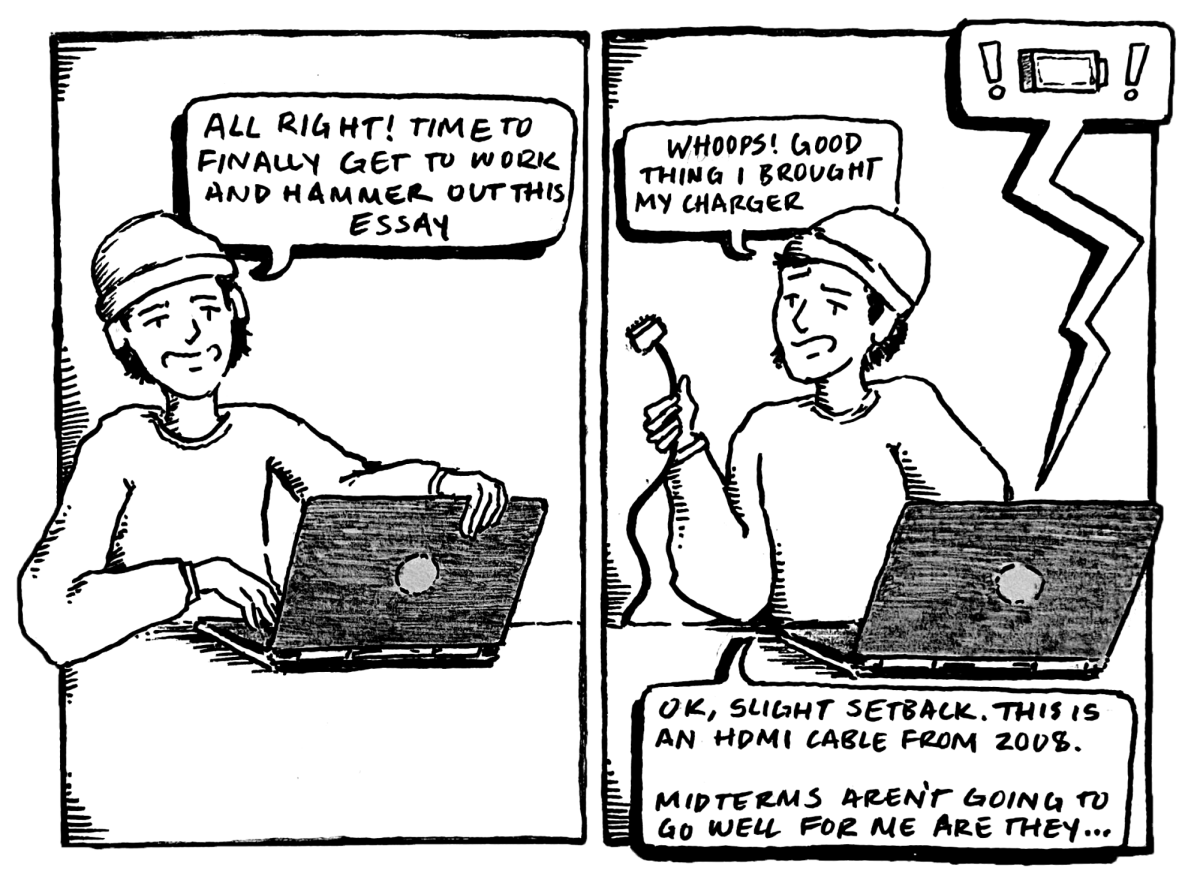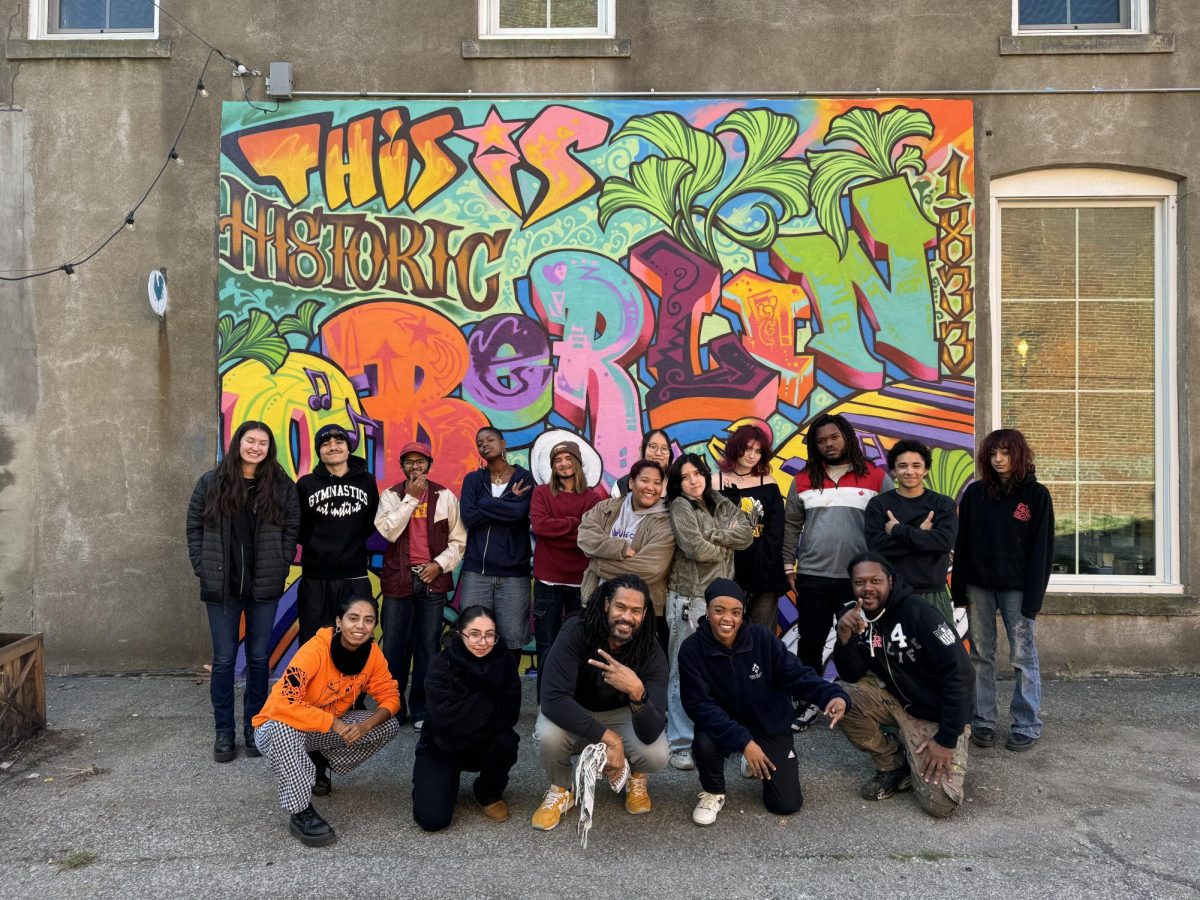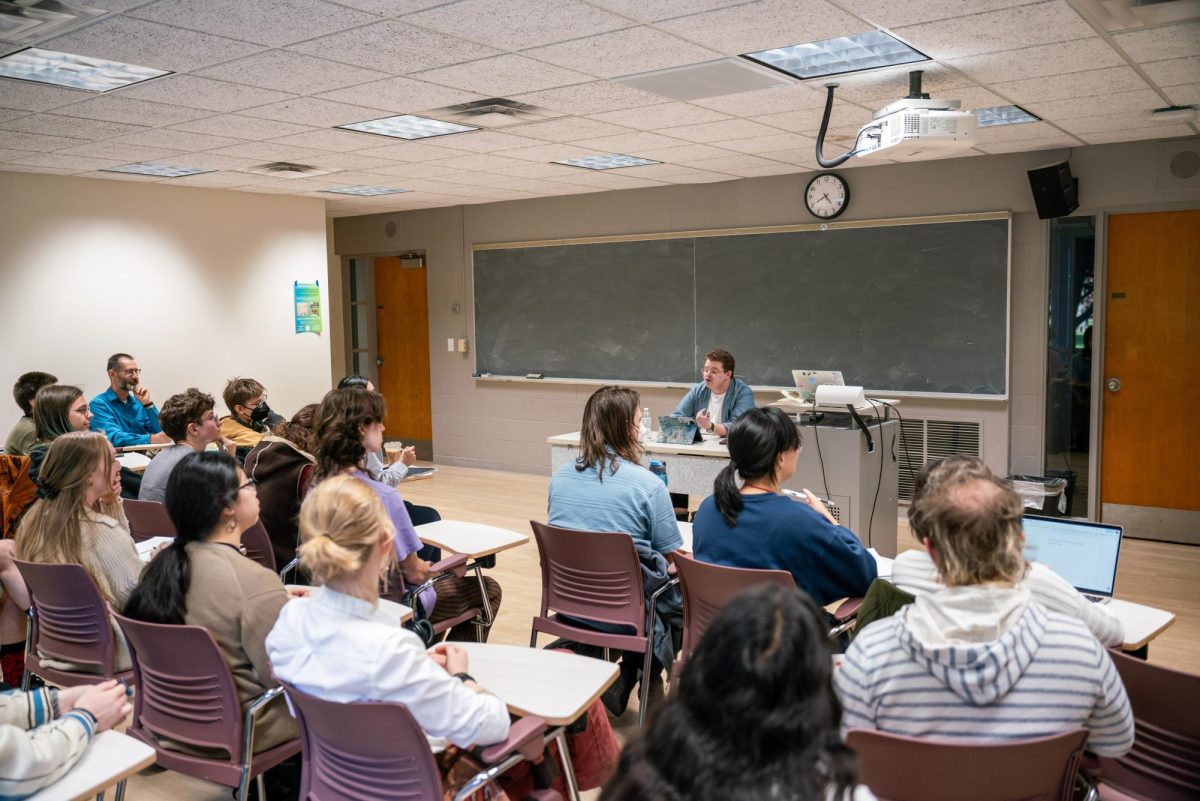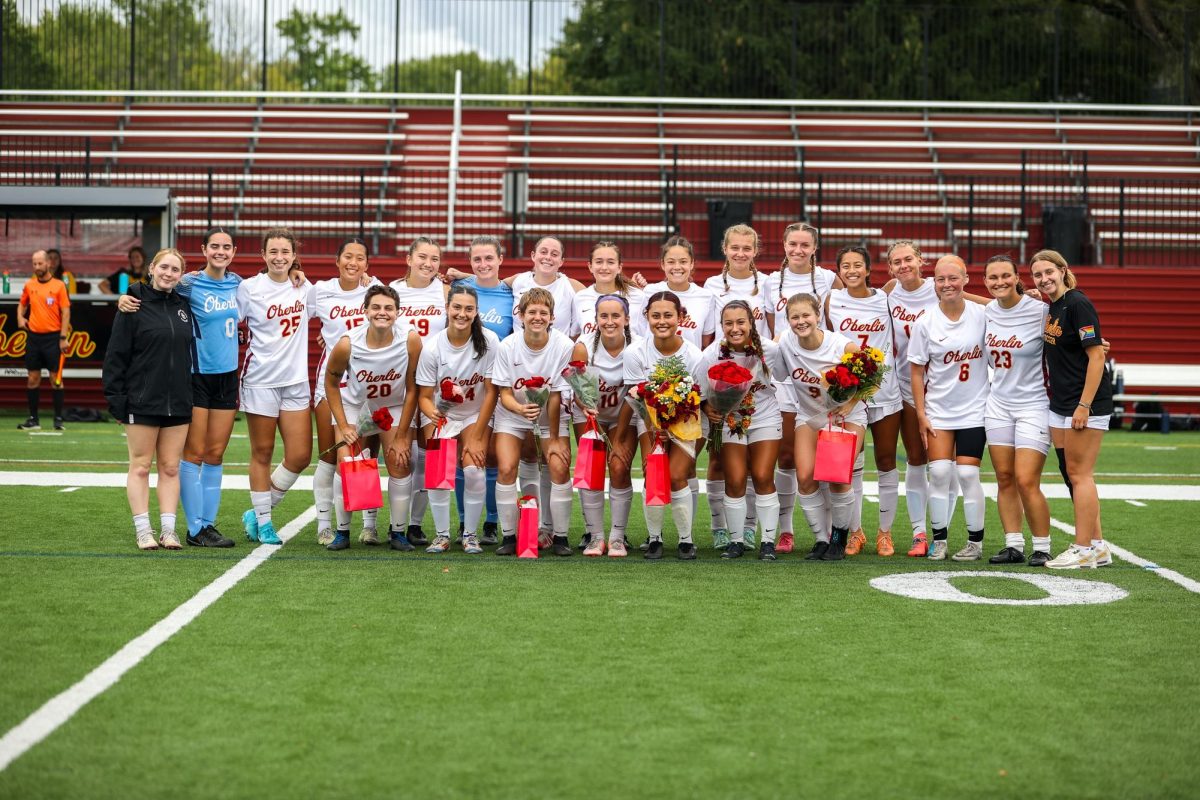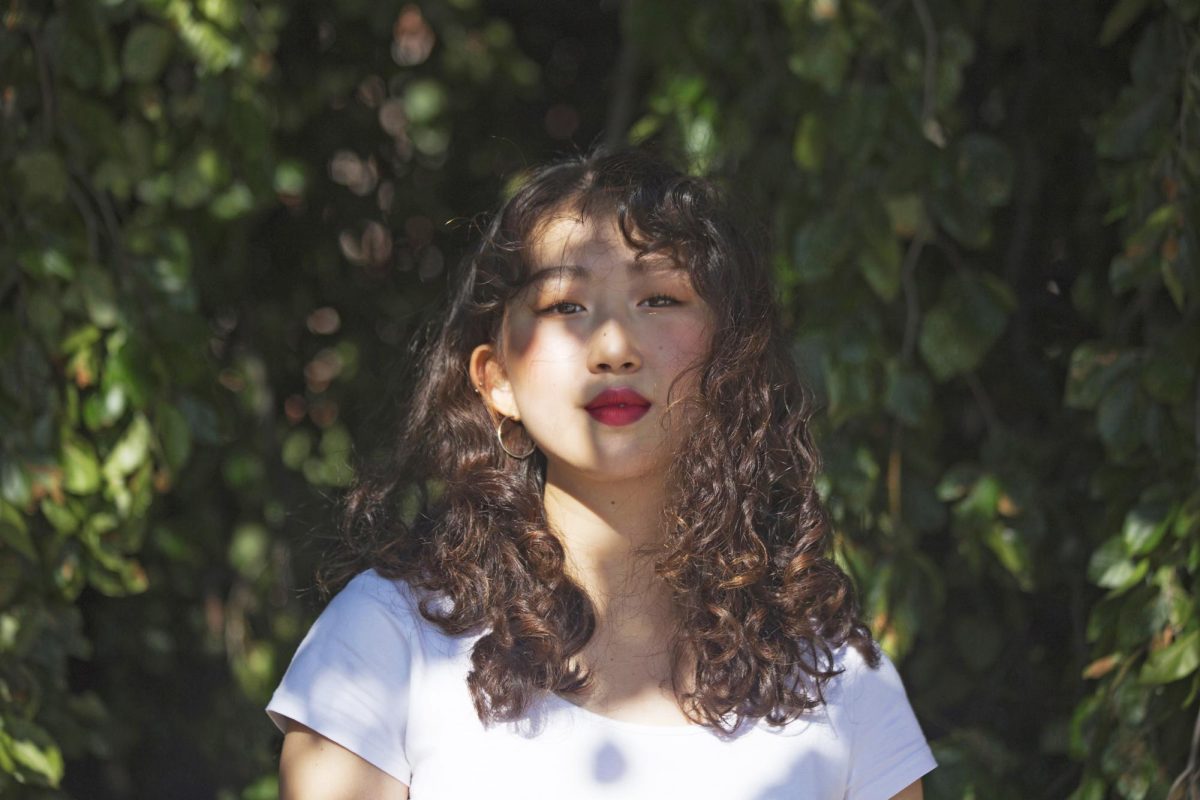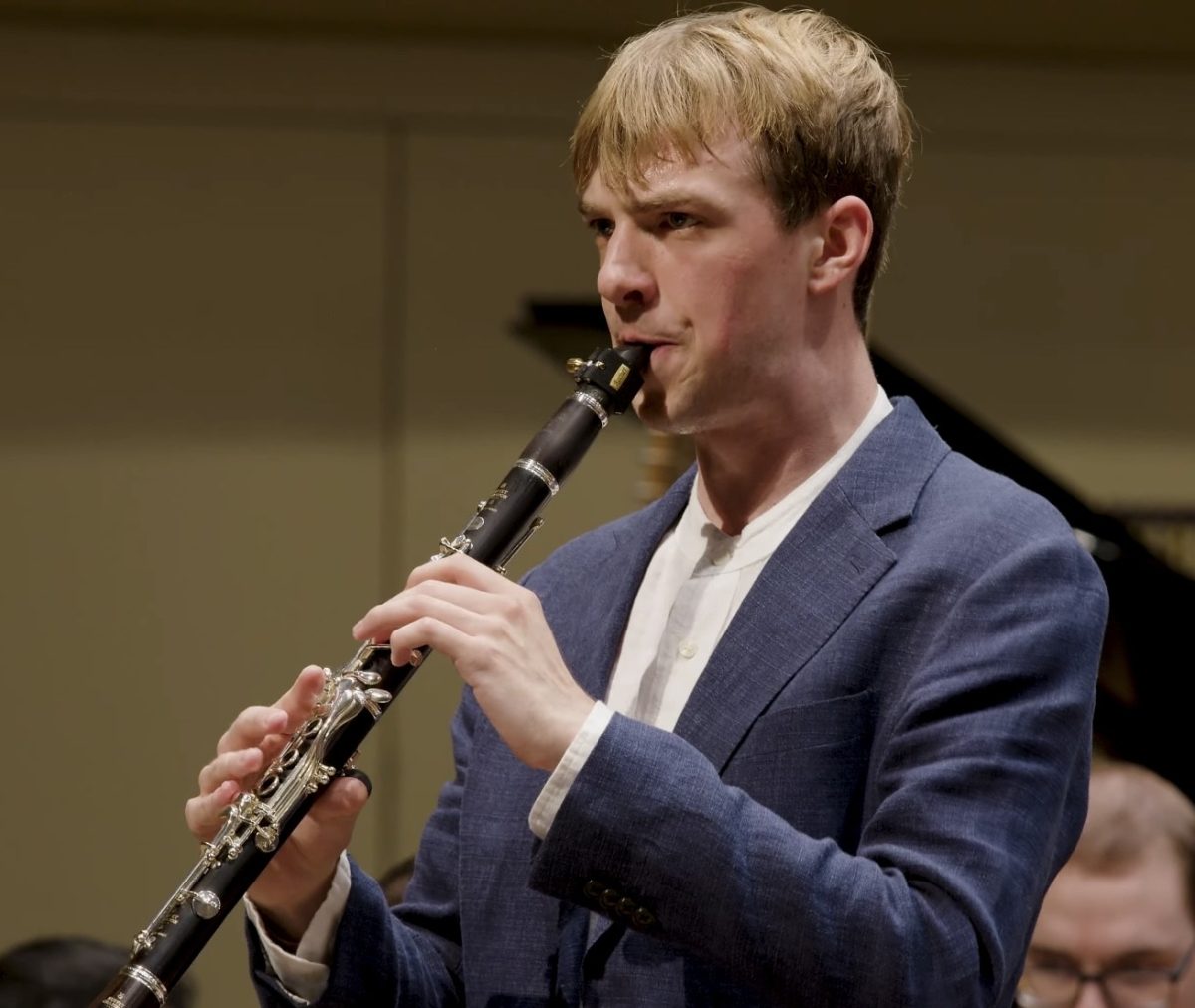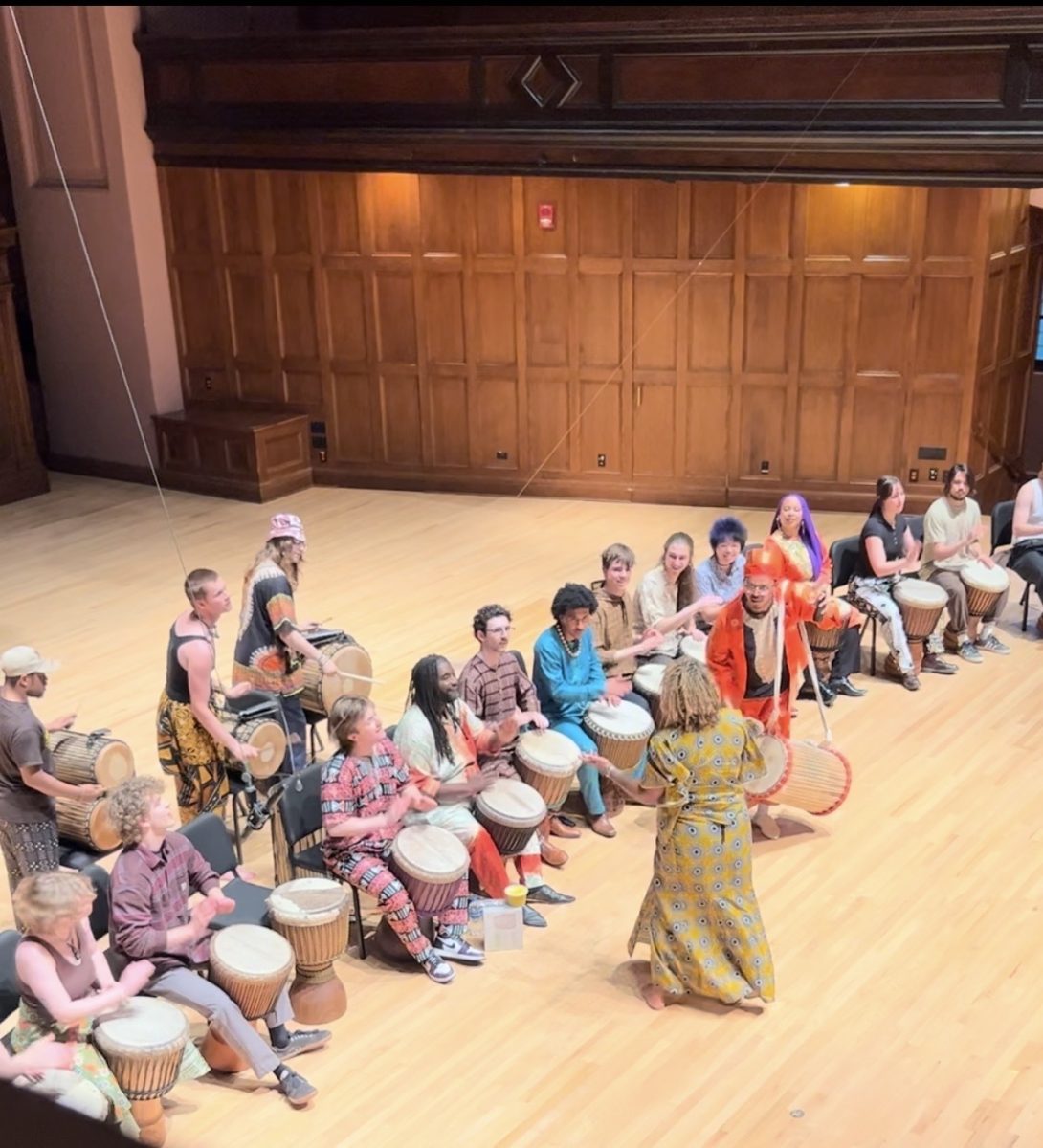‘Other Knowers’ Invokes New Ways of Thinking
April 5, 2013
Navjotika Kumar, assistant professor of art history at Kent State University, delivered a talk titled “Other Knowers, Other Ways of Knowing: The Feminine Principle and the Regeneration of Nature” on Tuesday, April 4. The event was part of the Ellen Johnson guest lecture series sponsored by the Art History department. Kumar presented on a variety of topics ranging from ecofeminism to issues associated with the multinational agricultural biotechnology corporation Monsanto to land artists like Andrea Zittel and Sakarin Krue-On.
Kumar began by explaining the work of Vandana Shiva, an ecofeminist working with female farmers in northern India whose words inspired the title of the talk. Shiva, also a nuclear physicist, runs a non-governmental organization called Navdanya, which she co-founded. Navdanya’s mission is to support local farmers by rescuing and conserving crops and plants that are on the brink of extinction by making them available through direct marketing. In addition to working directly with farmers, Navdanya has worked against agricultural corporations like Monsanto who patent genetically modified crops and seeds that are programmed to fail if not treated with pesticides harmful to the surrounding environment. Shiva’s work with Navdanya attempts to deal with regeneration science versus reductionist science in a day-to-day manner. Kumar made the connection that a similar debate arises in contemporary transgenic art.
Kumar provided a definition of transgenic art from contemporary artist Eduardo Kac. In an article published by the Leonardo MIT Journal, Kac writes, “Transgenic art is a new art form based on the use of genetic engineering techniques to transfer synthetic genes to an organism or to transfer natural genetic material from one species into another, to create unique living beings.” This new form of art capitalizes on technological advancements in science to allow for new processes of bio-art to exist. Kumar argued that the scientific revolution, coupled with the boom in capitalism and consumerism, allowed for art forms like transgenic art to emerge.
In the latter part of her talk, Kumar outlined how artists of different mediums work to create sustainable art. “[This] blurs the boundaries between art, science, nature and social gathering,” said Kumar. Kumar used artists like Agnes Denes, Fritz Haeg and Mark Dion to support this claim. Denes’s piece titled “Wheatfield: A Confrontation,” created in 1982, was constructed in the Battery Park area of New York City. Denes reworked the soil and produced a wheat field in front of office buildings where traders traded wheat seeds. Kumar asserted that this piece was a critique of the commodification of wheat. This kind of commodification of crops is exactly what Shiva and Navdanya are fighting against.
Following the discussion of these artists, Kumar handed out a single piece of white printer paper to the audience and asked, “What do you see?” One student said it made her think of various paper-making processes while another student said it reminded her of how paper and its production compromises surrounding ecosystems.
Kumar, satisfied with these responses, concluded by declaring, “We are used to seeing things in our own utility.”
She continued, “We are conditioned to think atomistically instead of holistically.” Kumar called to mind a large range of complicated questions in her lecture. As Kumar fleshed out the complexities of each issue, the audience was left to ponder its own involvement and thought process concerning the environment, politics and art.


